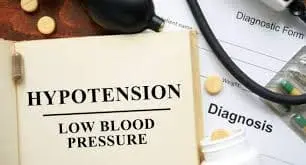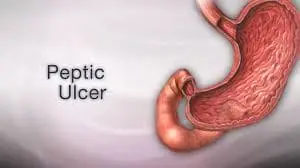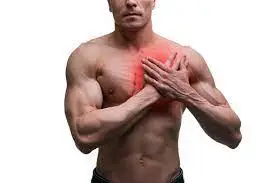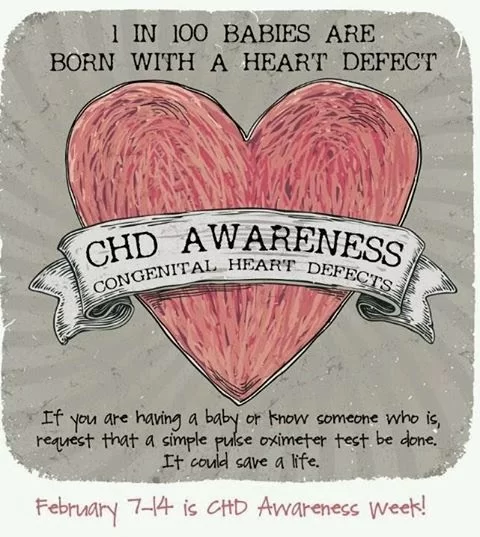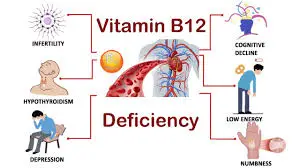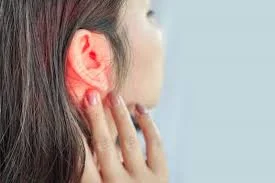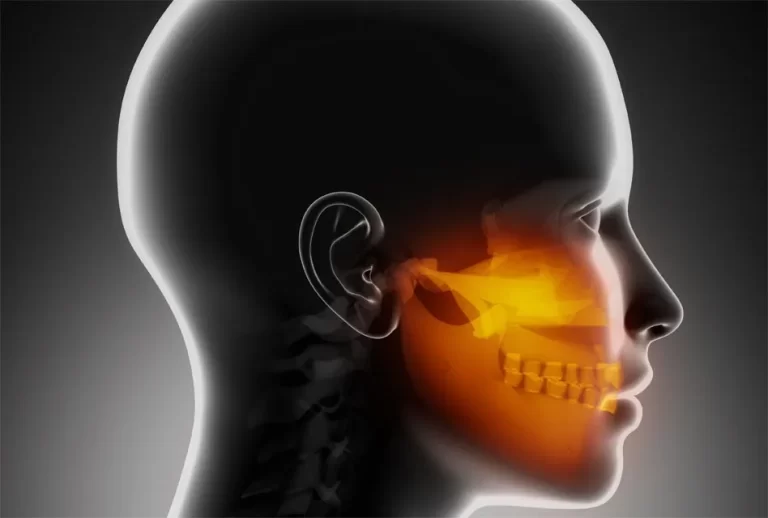Hypotension (Low Blood Pressure)
Defination
Hypotension is defined as a blood pressure that is considerably lower than normal and might be a cause for symptoms like lightheadedness or dizziness. Blood pressure is measured in measured in millimeters of mercury(mmHg) and includes two numbers:
Systolic pressure: the highest value that shows the force generated by a heartbeat. hypotension is defined as blood pressure less than 90 mmHg.
Diastolic pressure: The lowest value that measures the pressure in your heart when it rests between beats. hypotension is defined as a blood pressure less than 60 mmHg.
Causes of Hypotension
The two primary mechanisms that affect blood pressure are the heart’s ability to pump blood and the blood vessels’ resistance.
These mechanisms, combined with the effect of neurological and hormonal factors, decide whether blood pressure is high or low.
The following conditions can cause low blood pressure:
- Pregnancy. Vascular changes during pregnancy lead to a fast expansion of blood vessels. Blood pressure may decrease as a result of the changes. pregnancy-related low blood pressure is frequent throughout the first 24 weeks. After giving birth, blood pressure usually returns to pre-pregnancy levels.
- Heart and valve disorders. low blood pressure can be caused by a heart attack, heart failure, heart valve disorder, and bradycardia, which is an abnormally low heart rate.
- Diseases linked to hormones (endocrine diseases). Blood pressure can go down as a result of diseases like Addison’s disease or parathyroid or adrenal gland disorders. Hypoglycemia, or low blood sugar, and sometimes diabetes can also drop blood pressure.
- Dehydration of the body. The blood volume (the amount of blood in the body) falls when there is not enough water. Blood pressure can fall as a result of this. Dehydration can be brought on by a fever, vomiting, severe diarrhea, excessive diuretics, and vigorous activity.
- Severe infection (septicemia). When an infection reaches the bloodstream, it can cause a life-threatening reduction in blood pressure, which is known as septic shock.
- Loss of blood. Significant blood loss—from an accident or internal bleeding, for example—also lowers blood volume, which causes severe drop a in blood pressure.
- Severe allergic reaction. A rapid and unexpected blood pressure decrease is one of the symptoms of a severe allergic reaction.
- Inadequate intake of nutrients. Low blood pressure may result from anemia, or the body’s inability to produce enough red blood cells, which is caused by low levels of iron, folate, and vitamin B-12.
- After eating. Due to the intestines’ increased need for blood flow for digestion, blood pressure can sometimes drop after eating. Elderly adults are more likely to experience hypotension after eating, particularly if they have diabetes, high blood pressure, or Parkinson’s disease.
- Straining. Using the restroom, swallowing, or coughing might cause blood pressure to drop. All of these actions cause the vagus nerve to become more active, lowering blood pressure.
Medications that can cause low blood pressure
Low blood pressure may develop from taking certain drugs, such as:
- Diuretics, include hydrochlorothiazide (Microzide) and furosemide (Lasix).
- Alpha-blockers, including Minipress’s prazosin,
- Beta-blockers: propranolol (Inderal, Innopran XL, Hemangeol) and atenolol (Tenormin)
- Parkinson’s disease medications, such as those containing levodopa or pramipexole (Mirapex)
- Some antidepressants, such as imipramine (Tofranil) and doxepin (Silenor), specific antidepressant types (tricyclic antidepressants),
- Medications for erectile dysfunction, such as tadalafil (Adcirca, Alyq, Cialis) or sildenafil (Revatio, Viagra), especially when used with nitroglycerin (Nitrostat, Nitromist)
Shock and hypotension
Hypotensive shock can result from severe hypotension. Depending on the cause, shock can be described in different ways.
- Hypotensive shock: can result from severe hypotension. Depending on the cause, a shock can be described in several ways
- Hypovolemic shock: The heart can no longer pump blood efficiently as the total blood volume falls. Severe internal or external bleeding as well as severe dehydration are possible causes. Dehydration can be brought on by excessive urine production (caused, for example, by hormone imbalances or overusing diuretics) or fluid loss from vomiting and diarrhoea.
- Cardiogenic shock: Problems with the heart’s circulation prevent the heart from beating correctly. A person may experience chilly, dry skin and extremities, as well as a low heart rate.
- Distributive shock: The heart cannot pump quickly enough to make up for the loss of resistance in the vascular system. Anaphylactic shock, an allergic reaction, and septic shock, a possible infection-related complication are among the causes.
- Obstructive shock: When there is an obstruction in the circulatory system, the heart cannot pump blood efficiently or at all. One of the causes is pulmonary embolism. An individual may have quiet heart sounds and enlarged jugular veins.
Epidemiology
The actual cause determines the highly different epidemiology of hypotension. Elderly patients are usually more likely to experience symptomatic, non-traumatic hypotensive episodes. In addition, individuals in better health and greater physical activity will have lower resting asymptomatic blood pressure.
Symptoms of Hypotension
Low blood pressure frequently affects people without any symptoms. Very fit people with low blood pressure could be in great health.
Common symptoms consist of:
- feeling lightheaded
- dizziness
- losing consciousness
Symptoms associated with an underlying cause include:
- A stiff neck and headache
- vision changes
- Allergic responses, including edema
- Feeling tired and weak
- cold, pale, and dry skin
- vomiting and diarrhea
- fever
- Changes in the heart’s rhythm
- Dehydration and thirst
- Chest pain
- breathing difficulties
Pathophysiology
The autonomic nervous system regulates blood pressure by maintaining a balance between the sympathetic and parasympathetic nervous systems. The sympathetic nervous system increases heart rate and constricts arterioles, which raises blood pressure. Through the relaxation of arterioles to improve artery diameter and a decrease in heart rate, the parasympathetic nervous system reduces blood pressure.
Types of Hypotension
Orthostatic hypotension
Blood pressure drops when you go from sitting or lying down to standing, a condition known as orthostatic hypotension (sometimes called postural hypotension).
You can experience lightheadedness or dizziness until your body adjusts to the new position. When they wake up, this is what some people refer to as “seeing stars.”
Lower blood pressure most commonly occurs as orthostatic hypotension. While it can affect people of any age, older persons are particularly susceptible to it. A general decrease in blood pressure can also be brought on by pregnancy and aging.
Orthostatic hypotension is frequently caused by autonomic nervous system disorders like Parkinson’s and diabetes.
Postprandial Hypotension
This disorder can be identified by a decrease in blood pressure that occurs one to two hours following a meal. It mostly affects elderly persons, however young people with digestive system disorders may also be affected.
After eating, the body usually increases the heartbeat and narrows some blood vessels to keep the brain and digestive system supplied with blood. However, in patients with postprandial hypotension, this mechanism fails, resulting in symptoms such as dizziness, weakness, fainting, and falls.
Patients with high blood pressure and other autonomic nervous system disorders, including Parkinson’s disease, are also at risk for postprandial hypotension. In these situations, drinking lots of water and eating small, low-carb meals can help prevent the complications of low blood pressure.
Neurally mediated hypotension
Blood pressure is a function of the nervous system and other physiological systems (such as hormones and organs). When the heart and brain interact abnormally during a response, it can result in neurologically mediated hypotension.
Neurally-mediated hypotension can be caused by the following:
- Long periods of standing in the same position. This type of hypotension affects children more frequently than it does adults.
- Having a powerful emotional response, such as shock or fear. For this cause, some people have low blood pressure when undergoing medical or dental procedures.
Intracranial hypotension
When the fluid surrounding the brain and spinal cord leaks, it can cause intracranial hypotension. A cerebrospinal fluid venous fistula, or abnormal connection, could even be the cause of this. One other classification for sudden indications is spontaneous intracranial hypotension.
Supine hypotensive syndrome
When a drop in blood pressure happens in the latter stages of pregnancy, this condition develops. While lying in the supine position, the larger uterus compresses the inferior vena cava, resulting in a drop in blood pressure. Maternal hypotension can happen in extremely rare and severe situations without any warning signs or symptoms.
Diagnosis
History and Physical
Most of the time, hypotension has no symptoms. But if symptoms do show up lightheadedness or dizziness is the most common one. Syncope can happen at very low pressures.
It is possible to experience additional symptoms, which usually start from the underlying cause rather than the hypotension. Chest pain, dyspnea, shortness of breath, an irregular pulse, fever above 101 degrees Fahrenheit, headache, stiff neck, severe upper back pain, diarrhea, vomiting, painful urination, extreme allergic responses, tiredness, or abnormal vision are a few of the symptoms that they could have.
Tests
- Blood tests: They can be performed to search for underlying medical disorders that may be causing hypotension, such as anemia, dehydration, electrolyte imbalances, or other conditions.
- Electrocardiogram (ECG): measures the heart’s electrical activity and helps discover potential abnormalities impacting blood supply and oxygen delivery to the heart. https://medbroadcast.com/condition/getcondition/low-blood-pressure
- An echocardiography: can reveal details on the size, shape, and function of the heart.
- A stress test: measures your heart’s capacity to pump blood under physical activity or when using medication that simulates the effects of exercise on the heart.
- Tilt table test: Usually advised if your physician believes you may have neurally mediated hypotension (NMH) or orthostatic hypotension (A patient lies on a table for this diagnostic examination, and the table is tilted to elevate the patient’s upper body. This simulates the process of getting up from a sitting or sleeping position. When their position shifts, people with orthostatic hypotension or NMH may experience lightheadedness, dizziness, or even feeling faint.)
- An endocrine test: checks blood hormone levels to evaluate the health of an endocrine gland. This test will assist your physician in determining whether endocrine problems such as diabetes, thyroid disease, or Addison’s disease, are the cause of your hypotension.
Treatment of Hypotension
Treatment is rarely necessary for hypotension, or low blood pressure, that occurs without symptoms or with very minor symptoms.
Treatment for symptoms caused by low blood pressure is based on the primary cause. For example, your doctor might suggest changing the medicine, removing it, or reducing the dosage if it lowers blood pressure. Consult a medical professional before making any changes to your medication or stopping it completely.
The goal is to raise blood pressure and minimize symptoms if the cause of low blood pressure is unknown or if there is no available treatment.
Many ways are available to do this, depending on the type of low blood pressure, age, and health:
- Add some more salt. Because salt, or sodium, can occasionally and severely raise blood pressure, experts normally advise decreasing salt intake. Nonetheless, that may be advantageous for those who have low blood pressure. However, heart failure can result from an excess of salt, particularly in older persons. Therefore, before adding more salt, it’s crucial to consult a healthcare professional.
- Increase your water intake. fluids help to increase blood volume and avoid dehydration, both of which are essential in the treatment of hypotension.
- Put on compression stockings. These elastic stockings, also known as support stockings, are frequently used for relieving varicose vein pain and edema. They increase the heart’s blood flow from the legs. Some people find that elastic abdomen binders are more comfortable than compression stockings.
Medical treatment
Certain types of hypotension might need to be treated by a doctor. Among the medical interventions for low blood pressure are:
- Medication to treat an underlying medical condition. Medication for the underlying medical condition that is producing low blood pressure may be part of your treatment plan. For diseases including heart disease, diabetes, or infection, your doctor might suggest medicine.
- Medication to increase blood pressure. Your doctor might sometimes recommend taking medicine every day to treat extremely low blood pressure. When various treatments have failed to relieve severe orthostatic hypotension, this is more likely to occur.
- Treatment for shock in emergency. Hypotension caused by shock is the most dangerous type of low blood pressure. Treatment for dangerously low blood pressure needs to start right away. Your vital signs may be stabilized and your blood pressure raised by emergency professionals using fluids and other treatments.
Lifestyle and home remedies
Depending on the cause of low blood pressure, the methods below may help relieve or prevent symptoms.
- Drink less alcohol and more water. Even in moderation, alcohol can reduce blood pressure and dehydrate the body. Drinking water keeps the body from becoming dehydrated and raises blood volume.
- Pay attention to your body posture. Move gently from a squat or flat position to a standing one. Sit without crossing your legs. If low blood pressure symptoms start when you’re standing, cross your thighs like scissors and apply pressure. Alternatively, lean as far forward as you can while placing one foot on a chair or ledge. These movements encourage the heart to receive more blood from the legs.
- Eat small low-carb meals. Eat small meals multiple times each day to keep blood pressure from dropping considerably after meals. Eat less foods heavy in carbohydrates, such as bread, rice, pasta, and potatoes. a medical professional may also advise having one or two strong cups of tea or coffee with breakfast. Caffeine may cause dehydration, so drink plenty of water and fluids that are caffeine-free.
- Exercise regularly. Aim for at least 30 minutes a day of moderate physical activity as an overall goal. In the humid and hot weather, exercise should be avoided.
- Learn your stress or emotional triggers. Note any situations in which you had intense fear or emotion just before a decrease in your blood pressure. Planning might allow you to stay clear of these types of situations. On the other hand, you can arrange for assistance if you feel ill or dizzy.
Differential Diagnosis
- Cardiogenic shock
- Obstructive shock
- Benign hypotension
- Combined-type hypotensive shock
- Distributive shock
- Hypovolemic shock
Prognosis
Understanding low blood pressure and associated symptoms can help many people manage the condition. If you have triggers, identify them and learn how to deal with them.
Your doctor could suggest changing your lifestyle or receiving medical attention if your low blood pressure is causing you to feel unwell. Take any recommended medicine as instructed to raise your blood pressure and prevent any possibly dangerous side effects.
If you experience any symptoms or have concerns about your blood pressure, it’s advisable to let your doctor know.
Complications
Hypotension is easily treatable and isn’t usually an indication of a more serious health issue. However, to avoid potential consequences, low blood pressure needs to be treated for some people. Among the complications of hypotension are:
Falls and associated injuries
Your blood pressure may drop suddenly, causing you to feel lightheaded, faint, or even lose consciousness. These symptoms may appear suddenly, leading to falls or other accidents.
For older persons, falls are a leading cause of hospitalization. After eating or getting up, older persons are more likely to have hypotension. Your symptoms of hypotension can be controlled with treatment and lifestyle modifications.
Shock
Your important organs may begin to malfunction if your blood pressure drops too low, as they won’t be getting enough blood to function normally. You can become shocked by this. Shock symptoms include:
- rapid breathing
- cool, clammy skin
- a fast or irregular heartbeat
Results of Healthcare Teams
An interprofessional team comprising an internist, intensivist, endocrinologist, emergency department physician, and nurse practitioner is the most effective in diagnosing and treating hypotension.
Treatment is not necessary for outpatients who have asymptomatic hypotension. If symptoms are evident, however, treating hypotension should concentrate on treating the underlying cause. To correct the hypotension, some patients might also require vasopressor assistance in addition to intravenous fluids.
It can be necessary to receive blood transfusions if bleeding is the cause. If the mean arterial pressure is less than 65 mm Hg, vasopressors might be recommended. Early medicines and periodic blood cultures are essential if sepsis is suspected.
FAQ
What is the main cause of hypotension?
Hypotension has several different causes, including emotional stress, fear, insecurity, or pain (the most common causes of fainting). Dehydration causes the blood volume to decrease. Dehydration results from the body’s response to heat, which is to divert blood into the skin’s arteries.
What foods cause hypotension?
Foods prepared with refined wheat, white rice, and potatoes, as well as sugary beverages, move quickly from the stomach and into the small intestine, contributing to postprandial hypotension. Consume protein, beans, and whole grains that digest slowly if you want to maintain high blood pressure. It’s simple to get done.
Which fruit is best for low BP?
Hypotension can result from anemia, which is an additional result of consuming too little folate. Add foods high in folate to your diet, such as lentils, beans, and asparagus. Folate-rich fruits may cause high blood pressure. Grapefruit, orange, and lime are fruits that are beneficial for those with hypotension.
How do you diagnose hypotension?
Hypotension is classified according to the biometric characteristics of blood pressure measurement. If the mean arterial pressure drops to less than 65 mm Hg or the systolic blood pressure drops to less than 90 mm Hg, it could be absolute. It might be connected to a decrease in blood pressure to less than 40 mm Hg at the diastolic level.
What is the emergency treatment for hypotension?
A medical emergency is present when shock causes severe hypotension. You could receive: Intravenous (IV) injections of blood or other fluids. medications that strengthen the heart and raise blood pressure.
References
- Mrcgp, C. T. (2023, December 14). Hypotension. https://patient.info/doctor/hypotension
- Brazier, Y. (2023, November 16). What to know about low blood pressure (hypotension). https://www.medicalnewstoday.com/articles/159609#
- Sharma, S. (2023, February 19). Hypotension. StatPearls – NCBI Bookshelf. https://www.ncbi.nlm.nih.gov/books/NBK499961/
- Roth, E. (2021, November 22). Everything You Need to Know About Low Blood Pressure. Healthline. https://www.healthline.com/health/hypotension#
- BSc, M. F. (2023, September 1). 5 Types of Hypotension. Fullscript. https://fullscript.com/blog/types-of-hypotension
- Low blood pressure (hypotension) – Diagnosis and treatment – Mayo Clinic. (2022, May 14). https://www.mayoclinic.org/diseases-conditions/low-blood-pressure/diagnosis-treatment/drc-20355470
- Low Blood Pressure – Causes, Symptoms, Treatment, Diagnosis – MedBroadcast.com. (n.d.). https://medbroadcast.com/condition/getcondition/low-blood-pressure

